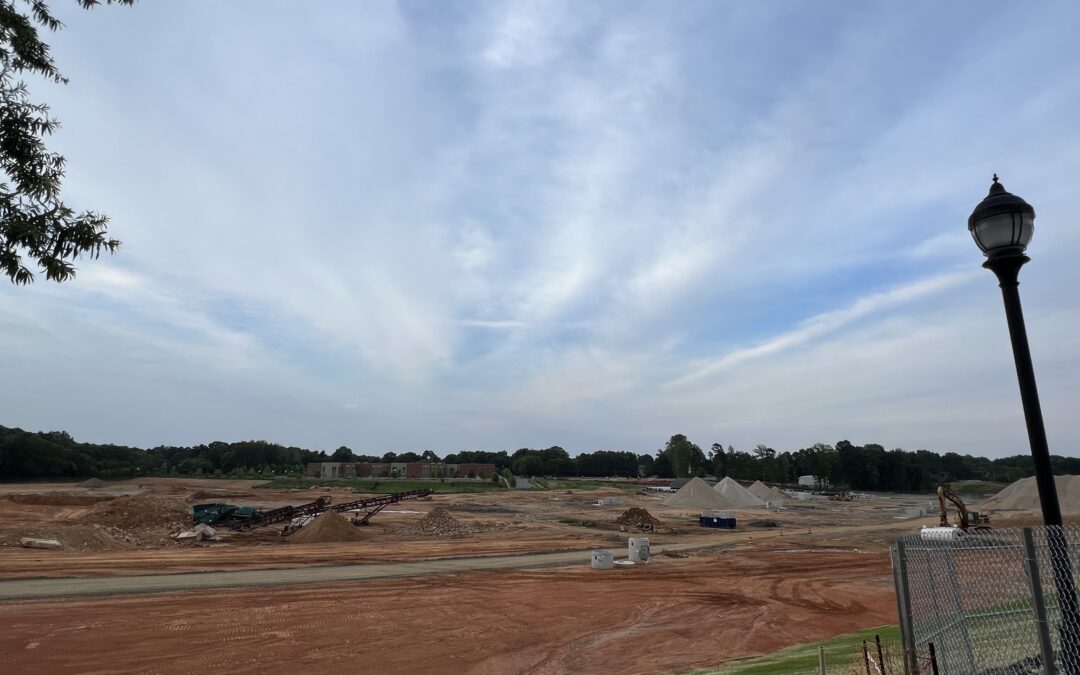Written by: Brooke Lackey
In my first week as Next Stage’s Community Voice Fellow, I was given my main task of the summer: to explore the Albemarle corridor, one of six Corridors of Opportunity in Charlotte. I was to get knee-deep in the demographics, history and overall energy of the community there. Before meeting with community members, I searched online articles and web pages to learn more.
Lo and behold, I found numerous articles about the Eastland Yards, once home to the now-demolished Eastland Mall. Looking through articles and photos of its prime made me nostalgic for an experience I never had. Complete with an ice skating rink, movie theater and the East Coast’s first in-mall food court, it sounded like an 80s dream.
I was truly captivated. Maybe it’s because it reminded me of my own childhood excursions to Hanes Mall (for any Winston-Salem natives out there). Beyond the trips to Claire’s and the food court, the mall offered my family and community a place to gather. It was evident that this was no different for Eastland. I began to wonder what Eastland Mall meant for the thousands that visited. More importantly, I thought of this gem’s significance for East Charlotte residents.
Eastland Mall undoubtedly was a destination, attracting many to East Charlotte. This was up until the early 2000s when the mall started to decline and eventually closed for good in 2010. Thirteen years later, the City has broken ground and considered many proposals for redevelopment of the 29-acre lot. East Charlotte has been and continues to be a diverse area, including a strong Hispanic/Latino population and representation from several countries. If anything is going to be developed where Eastland once stood, I thought, the community must have a say.
Community voice is more than gathering input for projects. Residents and community members are experts on their own needs—and leaning into their expertise is standard practice at Next Stage. Centering community voice cultivates relationships and trust, demanding responsibility and care. This could make Eastland’s redevelopment more impactful, and strengthen trust with East Charlotte communities in the future. What is the responsibility of the city to give Eastland a new life? And how must they prioritize that responsibility in regard to East Charlotte residents?
When I drove down Central Avenue to where it meets Albemarle Road, I was greeted by the gaping, red clay lot where Eastland once was. I walked alongside the fence that circumscribed the lot, musing at how many good conversations and memories were concentrated on this very spot. I also tried visualizing the different proposals for the future of Eastland Yards. Building a Target, an aquatic center or a racquet sports facility are a few proposals the city has considered. Before these, there was a solidified plan for Tepper Sports & Entertainment (TSE) to build practice fields for the Charlotte FC, but TSE pulled out of the redevelopment plans last year.
I recently searched for more articles about Eastland, wondering if any proposals had been decided on. This summer, two main proposals are being considered by the city: a sports, tech, and entertainment venue, and an indoor sports complex. Both of these proposals meet the Eastland Principles for Development, which were created to ensure the site would meet community goals, as set by the community and the City of Charlotte. According to WSOC-TV, redevelopment plans will include an outdoor ice skating rink to honor Eastland’s crowning attraction.
It is evident that effort is being put into making Eastland a community destination once again, and I am hopeful that this effort will continue to center community voice. Regardless of how the Eastland redevelopment moves forward, continuing community partnerships with proximate residents will be essential to creating impactful outcomes for all of Charlotte.

